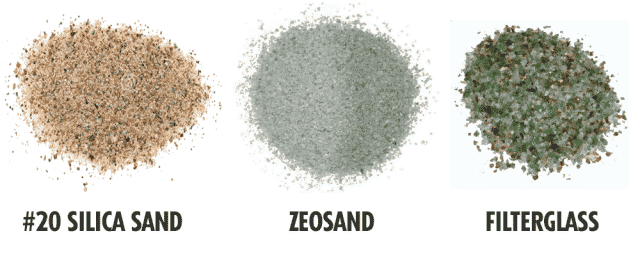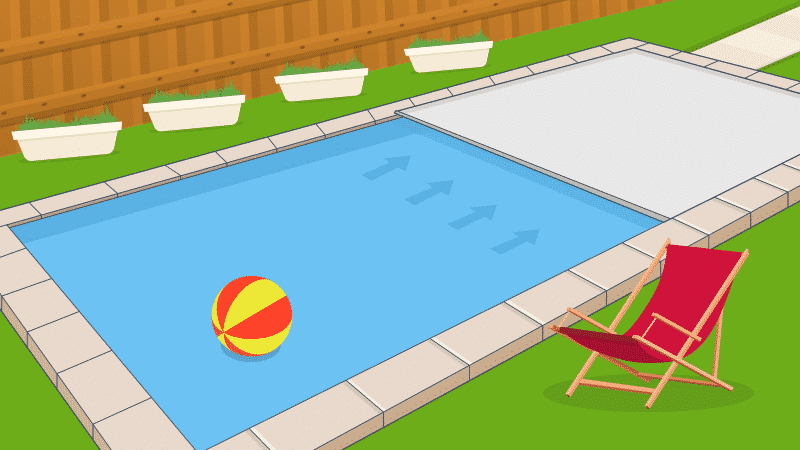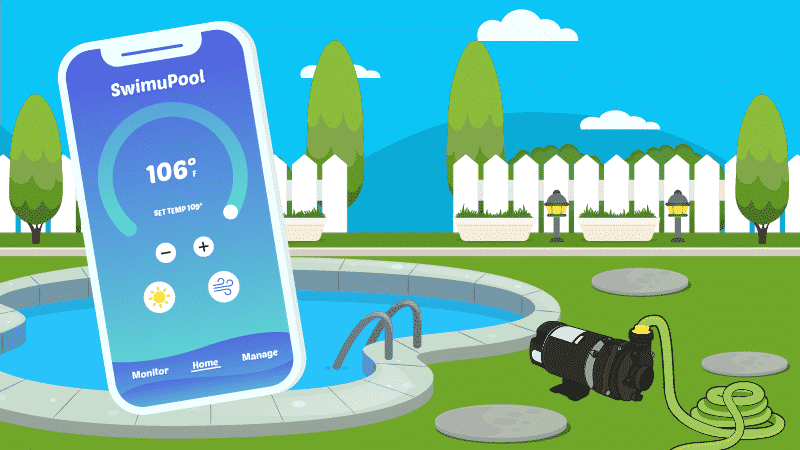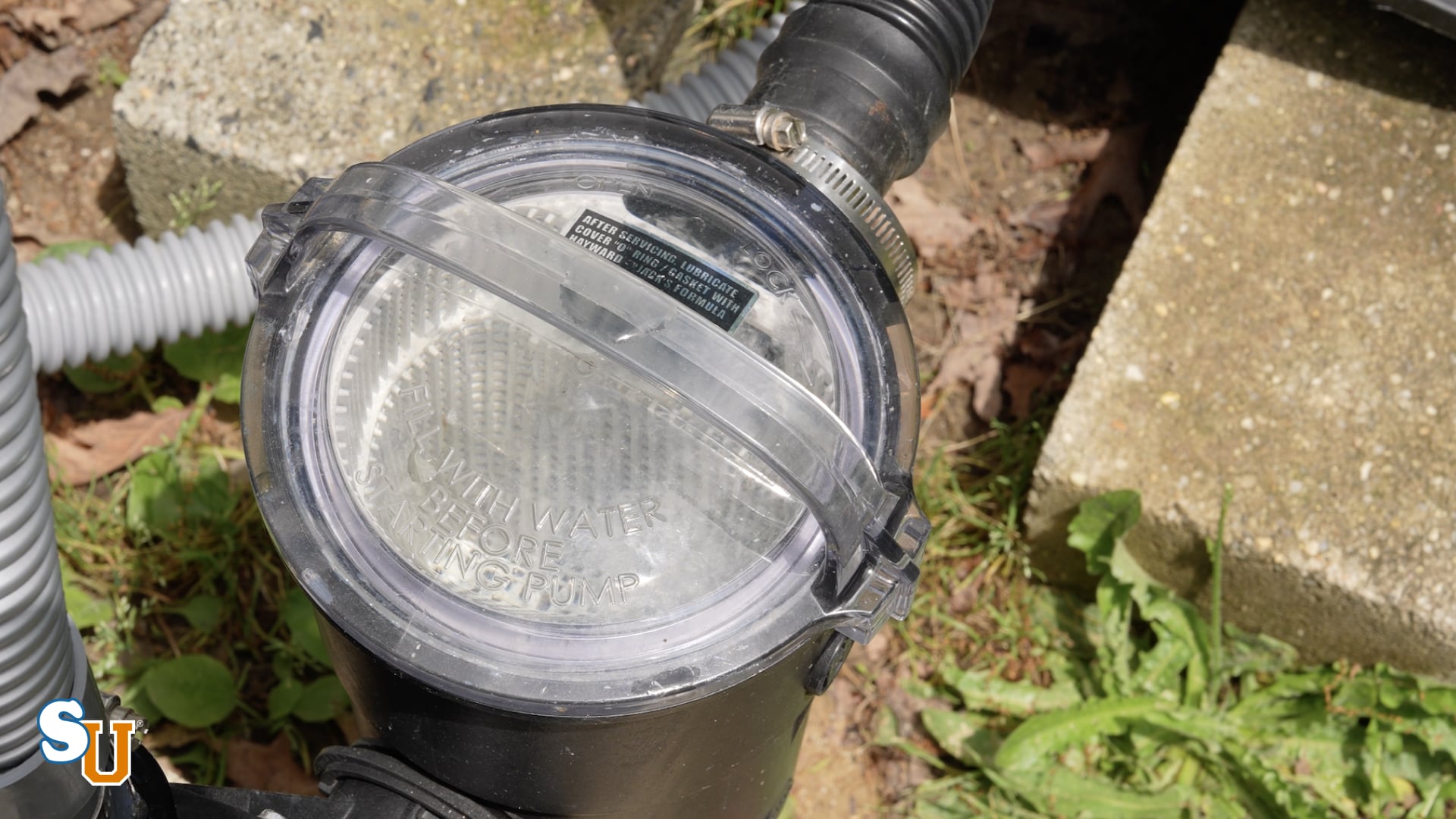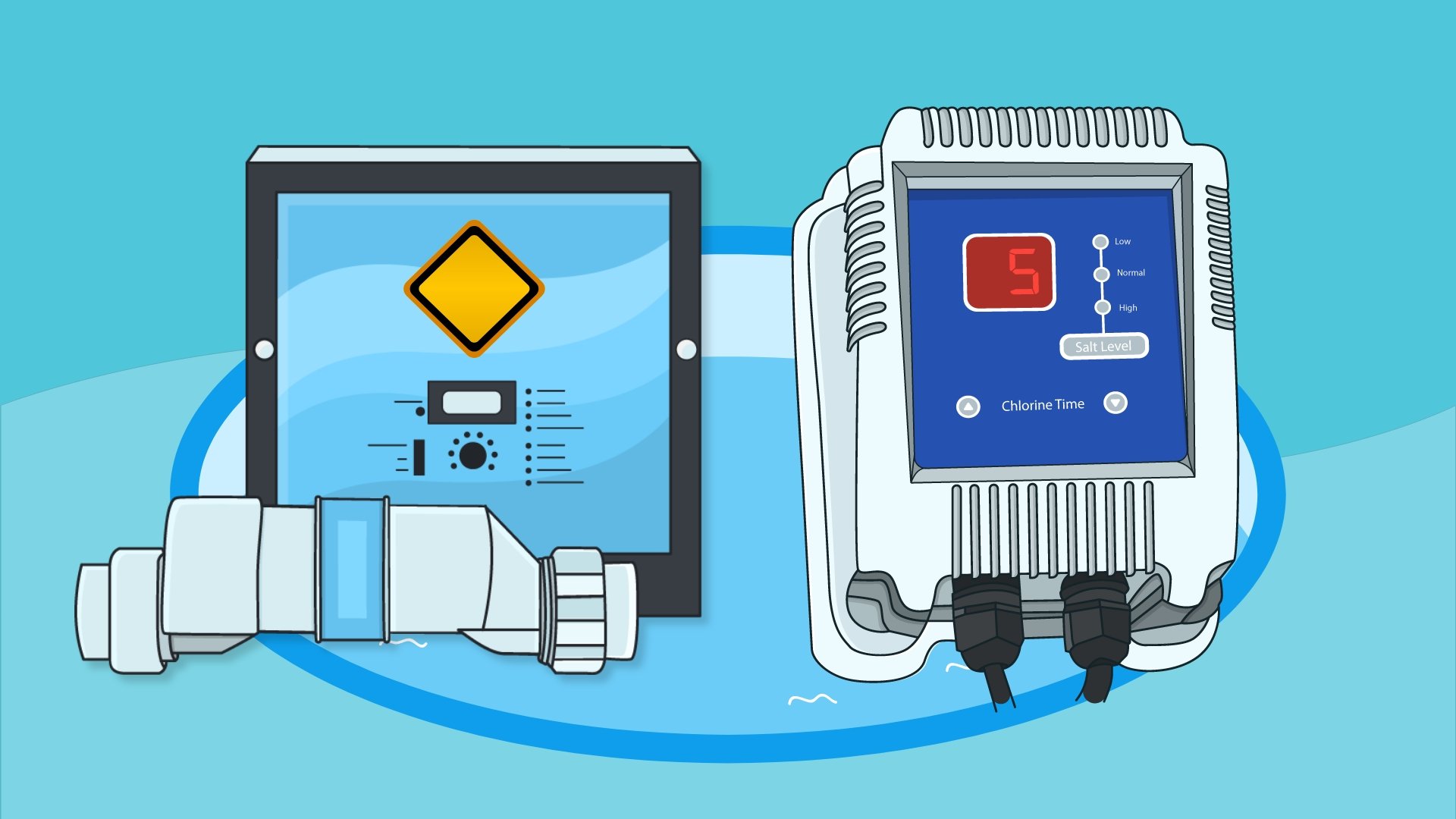How to Select The Best Pool Filter
Pool filters are as important to your pool as your kidneys are to your own body. We know that sounds kind of gross, but it’s true. Though chlorine and other sanitizers work to kill bacteria and other contaminants, the filter is what actually removes them from the water. Without it, your pool water would grow cloudy and fill with debris. Not exactly fun for swimming.
So how do you choose the best one? It’s not about which one is the least expensive, though cost is certainly a factor. You want a filter that will trap contaminants, be easy to clean and maintain, and last more than just a few seasons. In order to make the best selection for your pool, first get a handle on your options.
Pool Filter Types
The first step to choosing the best filter is knowing what your options are. You have three types of filters to choose from: sand, cartridge, and diatomaceous earth, or D.E. Price, replacement frequency, and filtration rates differ by type. And if you’re wondering how to clean a pool filter, that will also depend on the type you select.
But before you can accurately compare pool filter types, how well they function, and how much work they require to maintain, you need to know about microns.
What the Heck is a Micron?
Pool filters measure the size of contaminants they’re capable of removing in microns. It’s short for micrometer, which is one millionth of a meter.
Having trouble picturing just how small that is? A single strand of human hair is about 50 microns, or about .05 millimeters in diameter. Some bacteria measures about 2 microns, or about .002 millimeters in diameter.
Whether they’ve been killed by chlorine or not, bacteria and other contaminants can only be filtered out if the filter media—the material that actually does the filtering—is fine enough to collect those teeny, tiny particles.
Sand Filters
If you’re on a budget, and you want to spend minimal time on maintenance, a sand filter is the best choice for you. It’s also optimal for large pools because it won’t clog as easily as other filters.
Your pool pump sucks water in from the skimmers, then pushes it through a large filtration tank full of sand. The standard media used inside the tank is #20 silica sand. It grabs particles that measure 20 microns and larger.
Each grain of sand is, for lack of a better word, prickly. If you could look at it under a microscope, you’d see it has lots of little rough edges all around it, which is how it grabs contaminants and debris that pass through the filter.
As weeks and years pass, and more water flows through the filter, those rough edges are slowly worn down by erosion, eventually becoming smooth surfaces that aren’t able to capture anything.
At the same time, the particles trapped within the sand will build up over the life of the filter. This can actually help trap smaller particles, even as the sand itself begins to smooth out. But eventually, it will prevent proper water flow through the filter, reducing the filter’s efficiency.
A pressure gauge on the side of the filter will alert you to increasing internal pressure—a sign it’s time to backwash the filter. This easy cleaning method the filter reverses the water flow, flushing all the debris to waste.
Because the silica captures particles of 20 microns or larger, you’ll really need to stay on top of your pool water chemistry. If there’s not enough sanitizer in your pool to kill those tiny, 2-micron bacteria, a sand filter isn’t going to catch them either, and they’ll be floating around in your pool with you.
Our perfectly sized pool filter sand filters out insects, leaves, dirt, dust, sunscreen oiled, hair & other small particles to keep your pool sparkling clean. This pool filter sand is specifically designed to meet the standards for all brands of pool filters.
Sand Alternatives
Although #20 silica is the standard media in sand filters, you can slightly increase filtration efficiency by adding D.E. powder after backwashing or replacing the sand.
You can also entirely replace the silica with one of two alternatives.
ZeoSand: This is made from a mineral called zeolite. You need only half as much (by weight in pounds) as standard pool filter sand. Its crystal-like shape naturally traps smaller contaminants than silica. This improves water clarity and requires less frequent backwashing. ZeoSand lasts about five years, so its lifespan is similar to silica.
Filter Glass: This is finely crushed, recycled glass. Don’t worry about cuts—it’s smooth to the touch. It has a negative electrical charge which attracts positively charged particles, such as iron and manganese. You can use about 20% less filter glass than you would silica while filtering debris as small as 5 microns. It also lasts up to three times longer than pool sand.
Filter Balls: This innovative pool filter media offers superior performance with 2.9 lbs of filter ball, equating to 100 lbs of filter sand. The balls are made of polyester, polypropylene, and acrylic fiber. The spherical fiber filter features high filtration strength and speedy filtration. With the advantage of not blocking your filter and requiring less backwash for maintenance, this premium filter media extends filter life and is an excellent replacement for filter sand, glass, and other media.
Sand Filter Pros:
- Lower cost
- Easier maintenance
- Sand lasts five to seven years before needing to be changed
- Filtration efficiency can be boosted with additives and alternative media
Sand Filter Cons:
- 20-micron filtration is the least effective of the three types
- Backwashing and rinsing wastes water
- Building pressure decreases filter efficiency
Filter Balls to be super easy to manage, 100x lighter than sand filter media and it improved circulation and filtration, with lower filter pressure and higher flow rate. Eliminate hauling and disposal of hundreds of pounds of sand.
Cartridge Filters
Though they’re typically a bit more expensive than sand filters, cartridge filters are just as easy to maintain, and are more effective as long as you don’t have a huge pool.
Inside a tank slightly smaller than their sand cousins is a plastic cylinder surrounded by pleated polyester filter media and capped on each end. Water flows into the tank and through the pleats. Debris as small as 10 microns is captured in the filter, then clean water heads back to the pool.
Cartridges are energy efficient and inexpensive. As the filter collects contaminants, it’ll need cleaning. Rather than backwashing, you’ll simply remove the cartridge from the tank, and spray it with a hose to remove debris and dirt.
Occasionally, you’ll want to spray it down with filter cleaner, and on a regular basis, soak it in diluted muriatic acid or a chemical filter cleaning solution. While this is a bit more physical work for you than backwashing, it wastes less water.
Clean out your pool filter overnight to keep your water crystal clear and ready for swimming, works with all pool types and filter systems.
Cartridge Filter Pros:
- Filters contaminants as small as 10 microns
- No backwashing; less water waste
- Performs well at low speeds, such as with variable-speed pumps
Cartridge Filter Cons:
- More work than sand filters
- Lasts only 2 to 3 years
- Deep cleaning required 1 to 2 times per year
Diatomaceous Earth (D.E.) Filters
The most expensive, maintenance-intensive option also happens to filter the smallest particles of all three types of filters: 5 microns.
D.E. filter tanks contain grids or “fingers” covered in the crumbly, white powder. The powder is made from the crushed fossilized remains of tiny, aquatic organisms called diatoms. Though D.E. and sand pool filters are different, the fossils in D.E. are also composed of silica. The powdery substance can be found in pest control, cosmetics, and even toothpastes, but D.E. made for pool filters is heat-treated to work as a filtration media. So don’t go sprinkling that pest-control powder into your pool filter when you run out of D.E., mm-kay? We’re talking about different kinds of pests here.
Filter media for backwashing and cleaning D.E. pool filters.
Backwash or Bump Cleaning
Like sand filters, a pressure gauge on the tank will let you know when it’s time to clean your D.E. filter. Typically, D.E. filters are backwashed just like sand filters. Some brands feature a bump handle, which lets you knock the used D.E. off the grids or fingers to clean.
Whether you backwash or bump the filter, you’ll need to add more D.E. powder after every cleaning. It can be difficult to determine exactly how much to add, so it’s especially important to disassemble and clean the filter by hand at least once a year.
How to Add New D.E. to the Filter
After you’ve cleaned your filter, rather than adding D.E. powder directly to the grids, you’ll get much better coverage if you add it through the pool’s skimmer.
- Mix the D.E with enough water to make a slurry, which will look like a thin, creamy solution.
- Make sure the pool pump is running.
- Slowly pour the solution directly into the skimmer.
As the D.E. passes through the filter, it will evenly distribute over the grids. You’ll need to wait a while before swimming to give the mixture time to fully integrate with the filter, so you may want to do this in the evening, and then run your pump overnight.
Illegal Backwashing
Some cities and towns appreciate backwashing as much as parents of small children do. Yours may have regulations specifying how to legally dispose of used D.E.
When it’s rinsed from the grids, D.E. powder can build up over time, creating a concrete-like residue that can clog storm drains or suffocate fish eggs.
Usually, you’ll be allowed to empty old D.E. into a disposable container and place it in the trash. Check with your local authority for specifics to ensure you don’t end up with a fine, and more importantly, don’t damage the environment.
Cancer Risk with D.E. Filters
Though D.E. is a known carcinogen, it has only proved cancer-causing in mice when inhaled long term.
Important: Safety first. Prevent accidental inhalation by wearing a chemical mask when you handle D.E. powder. Also, keep children and pets away from the area when you’re working with D.E. powder, and from the area where it’s stored. Immediately clean up any spilled powder.
3M industrial and occupational products are intended, labeled, and packaged for sale to trained industrial and occupational customers for workplace use.
D.E. Filter Pros:
- Filters contaminants as small as 5 microns
- D.E. powder can be added through the pool skimmer
- No caustic chemicals are required for cleaning
D.E. Filter Cons:
- Highest cost filter
- Annual cleaning is a lot of work
- Grids need replacement every 2 to 3 years
- Hard to find for above ground pools
- Backwashing may be restricted by locale
- D.E. powder can be harmful if inhaled
Size Matters
A pool filter and a pool pump go hand in hand. The filter can’t function without the pump to move water through it. And neither will work properly if the pump isn’t the correct size for your pool.
Before you settle on a pool filter, make sure you have the right size pool pump.
Filter Size
Filters are rated by gallons per minute (GPM) per square foot. The filter flow rate must be rated at least the same GPM as your pump, or higher. With pool filters, it’s best to err on the larger size so it can handle the power of your pump. A helpful rule of thumb is to choose a filter with at least 1 square foot per 10,000 gallons pool capacity.
Bargain shoppers beware. It’s nice to save money when you can. But off brands can come and go, leaving you searching for replacement products from defunct companies down the road. Buying a pool filter from a trusted manufacturer can save you headaches and dollars in the long run.
How to Troubleshoot a Pool Filter
Because it plays such an important role in keeping your pool clean, it’s imperative that you keep your pool filter in good condition. Filters run into a few common problems, and knowing how to recognize them will help you troubleshoot, and then repair them.
Leaks
Do you hear or see water dripping around the filter? Have you noticed a small puddle forming below it? If so, your pool filter may have sprung a leak.
A leak in your filter won’t cause a significant drop in your pool’s water, but it’s still important to identify and repair the problem before it worsens.
First, try to identify the source of the leak. Check the filter’s tank for any holes. If you do find one, you may be able to patch it. But be prepared to replace the tank because a patch likely won’t hold up for very long.
If you have split-tank filter, check the belly for leaks. Remove the band and inspect the O-ring for wear and tear or debris. If it’s worn out, you’ll need to replace it. Remember to add pool gasket lubricant to help in sealing, and to keep the ring hydrated, which will help it last longer.
Use this stuff liberally on all rubber o-rings to get a tighter seal and it'll make them last longer too!
Cycle Problems
If your filter often seems to be running only in short cycles, and you notice this happening even when the pool isn’t in use, the filter could have a flow rate problem.
The likely problem is that the flow rate is too high, which means your pool pump may be too strong for your filter. It could also mean your filter isn’t big enough for your pool.
If your filter is the right size, you may need to backwash the filter for a longer period of time. When backwashing, remember to continue the process until the water in the sight glass is clear. This could take several minutes.
The filter may also be running in shorter cycles because algae or other debris is clogging it. Clean the pool filter thoroughly, and consider replacing it if it seems worn out.
Clean out your pool filter overnight to keep your water crystal clear and ready for swimming, works with all pool types and filter systems.
Filter Material in the Pool
It’s not uncommon to see some filter material in the pool after backwashing, regardless of what kind of filter you have. But if you start noticing it when you haven’t just backwashed, you may have a problem.
The first thing to check is the bolts holding the filter in place. If they’re loose, it could allow particles to escape into the pool. If they’re not, look for other causes.
If you have a sand filter, the filter lateral or standpipe may be broken. If it is, you’ll need to replace it.
If you have a D.E. filter, there could be tear in the fabric of the grid, or even a crack in the grid manifold. Again, if this is the problem, you’ll need to replace the manifold.
Water Pressure Problems
Checking the pressure gauge should be part of your regular pool maintenance. Problems with water pressure can affect your pool filter’s performance.
If the pressure is too low, there could be a blockage in the system somewhere before the filter. If the pressure is too high, there could be a blockage at some point after the filter.
Thoroughly check the filter system to see if it’s clogged, and clean it if necessary. If you don’t find any clogs, and the filter is clean, check the return valve to make sure it’s completely open, and then double check the lines to see if you can find a clog.
Best Sand Filters
If you’re looking for low-cost, low-maintenance filtration that won’t clog up quickly, four models stand out above the rest.
Hayward S244T ProSeries Top-Mount Sand Filter (Inground)
Featuring a weatherproof, corrosion-proof tank, the Hayward S224T ProSeries is built to last. It’s available in three sizes and includes a multi-port valve.
You can get models with side mounts, if needed. Plus, you only have to backwash it every few months, depending on how often you use your pool.
Pentair Triton II Side Mount Sand Filter without Valve (Inground)
Created with ease of use in mind, the Pentair Triton II is the picture of simplicity. The pressure gauge is conveniently located and easy to read. Its swing-away diffuser gives you quick access to the sand. And the combination sand/water drain makes winterizing a snap.
Intex Krystal Clear Sand Filter Pump (Above Ground)
If you have an Intex pool, why not get a sand filter designed specifically for it? The Intex Krystal Clear has a 24-hour timer so you can automate filter cycles. The six-function valve easily switches between filter, backwash, rinse, recirculate, drain, and close.
At the end of the season, it’s easy to quickly break down and store this filter through the winter. Plus, you’ll only have to replace the sand every five years or so.
Best Cartridge Filters
Want a finer filter media than sand, without the expense or labor-intensive maintenance? Four cartridge models do the job.
Pentair 160301 Clean & Clear Plus Cartridge Pool Filter (Inground)
Designed with the maximum filter surface area to clean your water more quickly and efficiently than other filters, the Pentair Clean & Clear Plus has an effective filter area of 420 square feet. Internal and manual air relief make maintaining good water pressure easy. It filters 150 GPM inside a sturdy, injection-molded tank.
Hayward C4001575XES EasyClear Filter (Above Ground)
From a trusted name in the pool industry comes the Micro StarClear. This little Hayward filter is just right for above ground pools under 24,000 gallons. It offers easy access to the cartridge for changes, and you can rotate the head so the pressure gauge and manual air relief valve are right where you need them.
Intex 28633EG Krystal Clear Cartridge Filter Pump (Above Ground)
If you’re an Intex owner looking for a cartridge filter, this is for you. Unlike other options, this filter uses disposable cartridges. Maintenance is as convenient as turning the handy flush valve and popping in a new cartridge.
At the end of the season, dismantle and store it with your pool. If your weather is mild, its double-walled construction means you can just leave it up with no worries.
Best D.E. Filters
For just a bit more money and maintenance, you can enjoy the best filtration available by choosing a D.E. filter.
Pentair 188592 Quad Cartridge Style D.E. Pool Filter (Inground)
Designed with easily removable cartridges, the Pentair Quad makes maintenance a little easier on you. It has four, large-capacity cartridges that provide loads of surface area so your pump uses less energy to get the water just as clean as other D.E. filters.
The increased surface area also means it takes longer to clog, so you can clean it less often. It’s all housed inside a durable, fiberglass-reinforced polypropylene tank.
With four large capacity cartridges, this filter provides maximum filter surface area for greater dirt-trapping capacity and longer periods between cleanings. And its easily removable cartridge elements make maintenance fast and easy.
Hayward EC40AC Perflex Extended-Cycle D.E. Pool Filter (Above Ground)
If you’re looking for serious cleaning and low maintenance, look no further than the Hayward Perflex Extended-Cycle. Featuring a cool bump mechanism that allows the D.E. Flex-Tubes to clean themselves, this model means minimal cleaning time. It’s designed to minimize resistance, so it can maximize efficiency at lower horsepower.
Built for above ground pools, this D.E. filter provides powerful filtration at an economical price. Its Flex-Tube system reuses D.E. powder to keep the filter running cleanly.
The Best Filter is the One That’s Best For You
You can spend less money for less maintenance and less filtering. Or invest a little more up front for better filtering for the cost of more time and work. It’s really up to you what’s best for your schedule and your budget.
No matter what pool filter you choose, remember that keeping your water chemistry balanced gets you more than halfway to a clean pool. Stay on top of cleaning and maintenance, and your filter can last you for many years to come.
Happy Swimming!
3 Ways We Can Help With Your Pool
- The Pool Care Handbook: An illustrated guide to DIY pool care, including water chemistry, maintenance, troubleshooting, and more.
- The Pool Care Video Course: You’ll get 30+ step-by-step videos and a downloadable guide with everything you need to know about pool maintenance.
- The Pool Care App: Enter your water test results. Get a custom treatment plan. Know exactly what chemicals to add to keep your pool clear.



